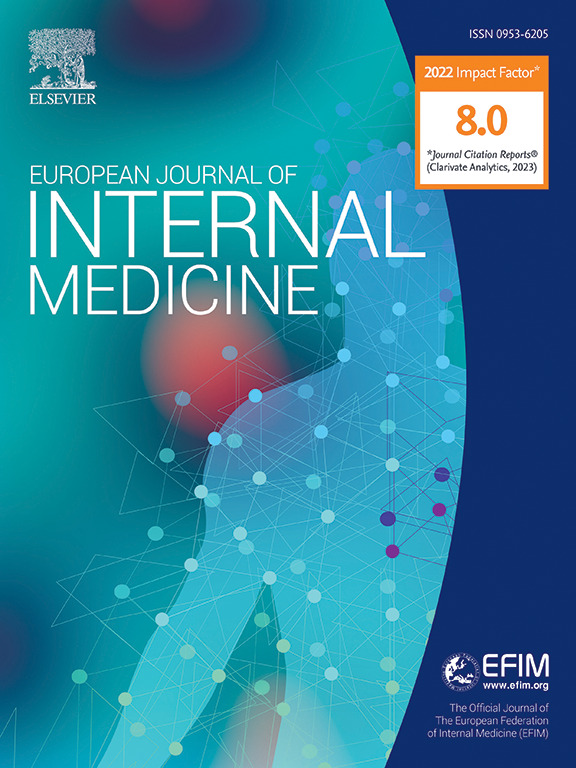Tularemia for clinicians: An up-to-date review on epidemiology, diagnosis, prevention and treatment
IF 5.9
2区 医学
Q1 MEDICINE, GENERAL & INTERNAL
引用次数: 0
Abstract
Tularemia, also known as rabbit fever, caused by Francisella tularensis, is re-emerging in the Northern Hemisphere and in particular in Europe in recent years. It is a bacterial zoonotic, arthropod-borne, air-borne, food- and water-borne disease and the multiple routes of infection result in six typical clinical pictures (ulceroglandular, glandular, oculoglandular, oropharyngeal, typhoidal, and pneumonic) along with several other uncommon presentations, potentially affecting any body site. In addition, due to the ease of airborne transmission, F. tularensis is a category A agent for bioterrorism. If not promptly diagnosed and treated, the fatality rate can be as high as 60 %, with the poorest outcomes reported in the pneumonic and typhoidal forms. Gentamicin is the first-line treatment for severe tularemia, while fluoroquinolones and tetracyclines are commonly the drugs of choice in less severe forms. Prevention is based on environmental and animal control strategies, proper signaling of the clinical suspicion to the laboratory staff and postexposure prophylaxis. In consideration of the re-emergence of the disease and the diagnostic and therapeutic challenges it poses, we performed a comprehensive up-to-date review of tularemia epidemiology, clinical presentation, diagnostic tools, treatment and prevention strategies.
临床医生的兔热病:流行病学、诊断、预防和治疗的最新综述。
由土拉菌弗朗西斯菌引起的土拉菌病,也称为兔热,近年来在北半球,特别是在欧洲重新出现。它是一种细菌性人畜共患、节肢动物传播、空气传播、食物和水传播的疾病,多种感染途径导致六种典型的临床表现(腺溃疡、腺溃疡、眼腺溃疡、口咽溃疡、伤寒和肺炎)以及其他几种不常见的表现,可能影响身体的任何部位。此外,由于易于通过空气传播,土拉菌是生物恐怖主义的a类病原体。如果不及时诊断和治疗,死亡率可高达60%,据报告,肺炎和伤寒形式的结果最差。庆大霉素是严重兔热病的一线治疗药物,而氟喹诺酮类药物和四环素类药物通常是较不严重形式的首选药物。预防的基础是环境和动物控制策略,向实验室工作人员适当发出临床怀疑信号,以及接触后预防。考虑到该疾病的再次出现及其带来的诊断和治疗挑战,我们对土拉菌病流行病学、临床表现、诊断工具、治疗和预防策略进行了全面的最新审查。
本文章由计算机程序翻译,如有差异,请以英文原文为准。
求助全文
约1分钟内获得全文
求助全文
来源期刊
CiteScore
9.60
自引率
6.20%
发文量
364
审稿时长
20 days
期刊介绍:
The European Journal of Internal Medicine serves as the official journal of the European Federation of Internal Medicine and is the primary scientific reference for European academic and non-academic internists. It is dedicated to advancing science and practice in internal medicine across Europe. The journal publishes original articles, editorials, reviews, internal medicine flashcards, and other relevant information in the field. Both translational medicine and clinical studies are emphasized. EJIM aspires to be a leading platform for excellent clinical studies, with a focus on enhancing the quality of healthcare in European hospitals.

 求助内容:
求助内容: 应助结果提醒方式:
应助结果提醒方式:


